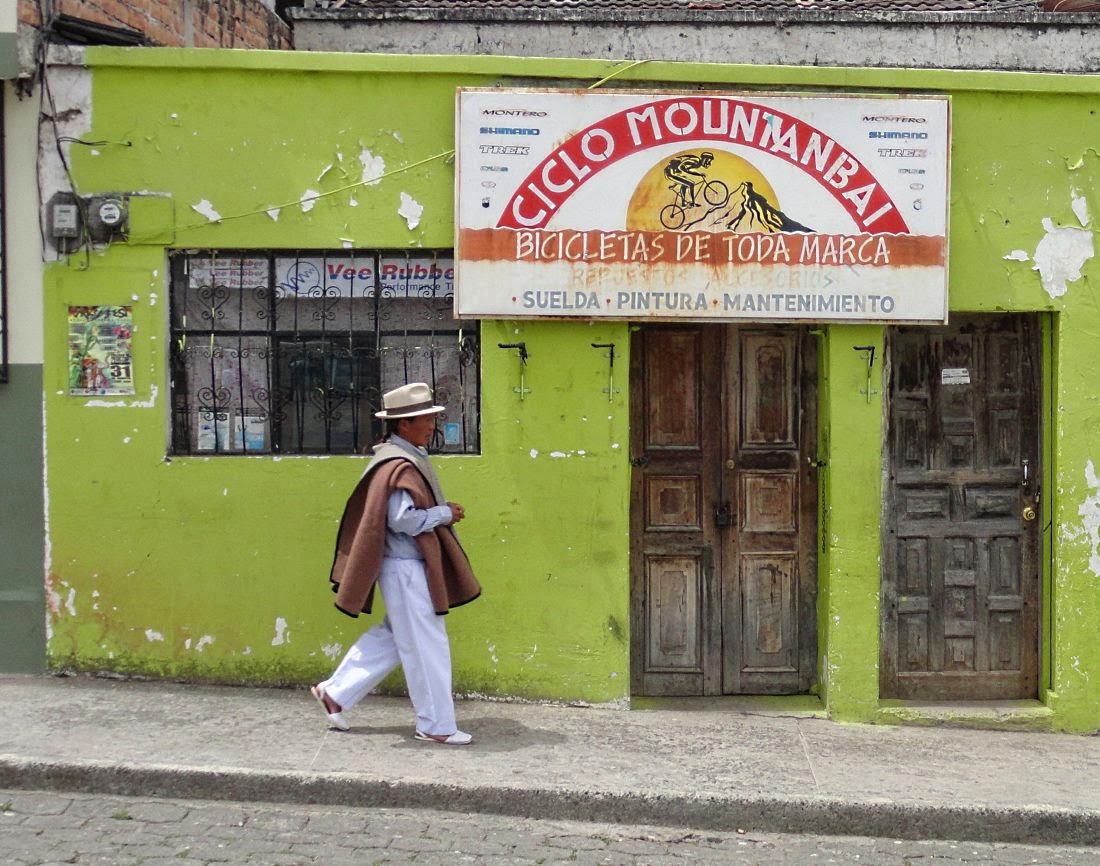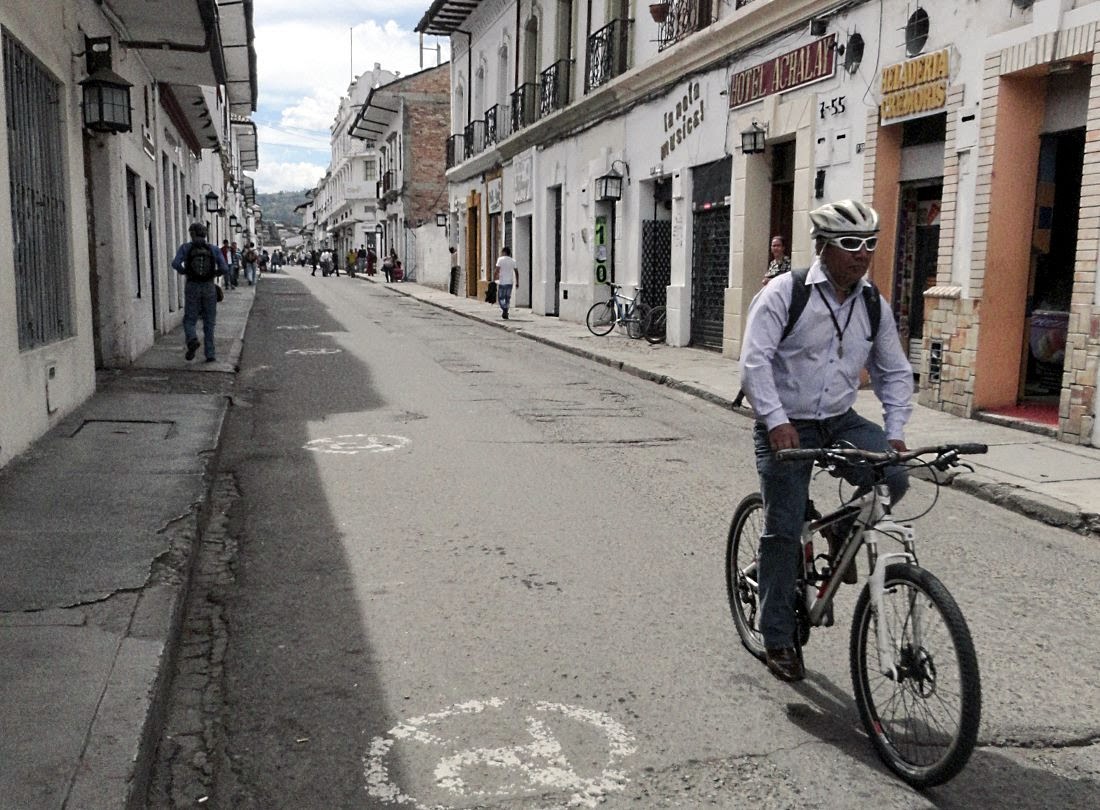
The village of San Cipriano, in south-west Colombia, is famous for its unique mode of transport. It's 12km from the nearest road: to get there, you have to take a three-hour bus from Cali, get off in the middle of nowhere, and walk across this footbridge... (pic)

...and wait around by the railway tracks on the other side. Trains no longer run, but the track is the only way (apart from a very rough footpath) to get to San Cipriano. So the resourceful locals came up with
brujitas, 'little witches' (pic): a motorbike with platform at the side, fitted with railway wheels.

The bike's front tyre rests on the platform, and the back one on the track, driving the whole thing along. It's the standard local transport for the 12km between village and roadhead (pic), and a taxi service for visitors. If two meet mid-track, one driver just has to stop and haul it off.

The twenty-minute journey is a thrilling experience (pic), especially when the Colombian lady of a certain age next to you keeps grabbing your thigh to stop herself falling off, and then giggles an apology.

There are tunnels... (pic)

... and alarming short bridges with no visible means of support. (pic)

San Cipriano itself is a jungle village (pic) of ramshackle tin-roofed wooden huts, many of which offer food and very basic accommodation. They are draughty and completely uninsulated, so would probably score only a B on British homebuyers' efficiency ratings.

Life is simple here. With no electricity or internet, the locals simply enjoy the outdoors, chatting or playing in the cool, lovely river (pic). Until the electricity came on at 5pm, that is, when the young people all gathered in one of the bars to play pool, listen to very loud Colombian rap, and text their friends.

I enjoyed a beer on the balcony of my hotel and watched the local families sit outside talking in the warm evening (pic), and had a superb fish supper. Not quite as fresh as it could be - the man who caught it walked quite slowly from the riverside to the hotel.


 On the other side there's a half-day hike to various pleasant waterfalls (pic). You can also see a wide variety of brightly-coloured butterflies, hummingbirds, and insects to be bitten by.
On the other side there's a half-day hike to various pleasant waterfalls (pic). You can also see a wide variety of brightly-coloured butterflies, hummingbirds, and insects to be bitten by.















































